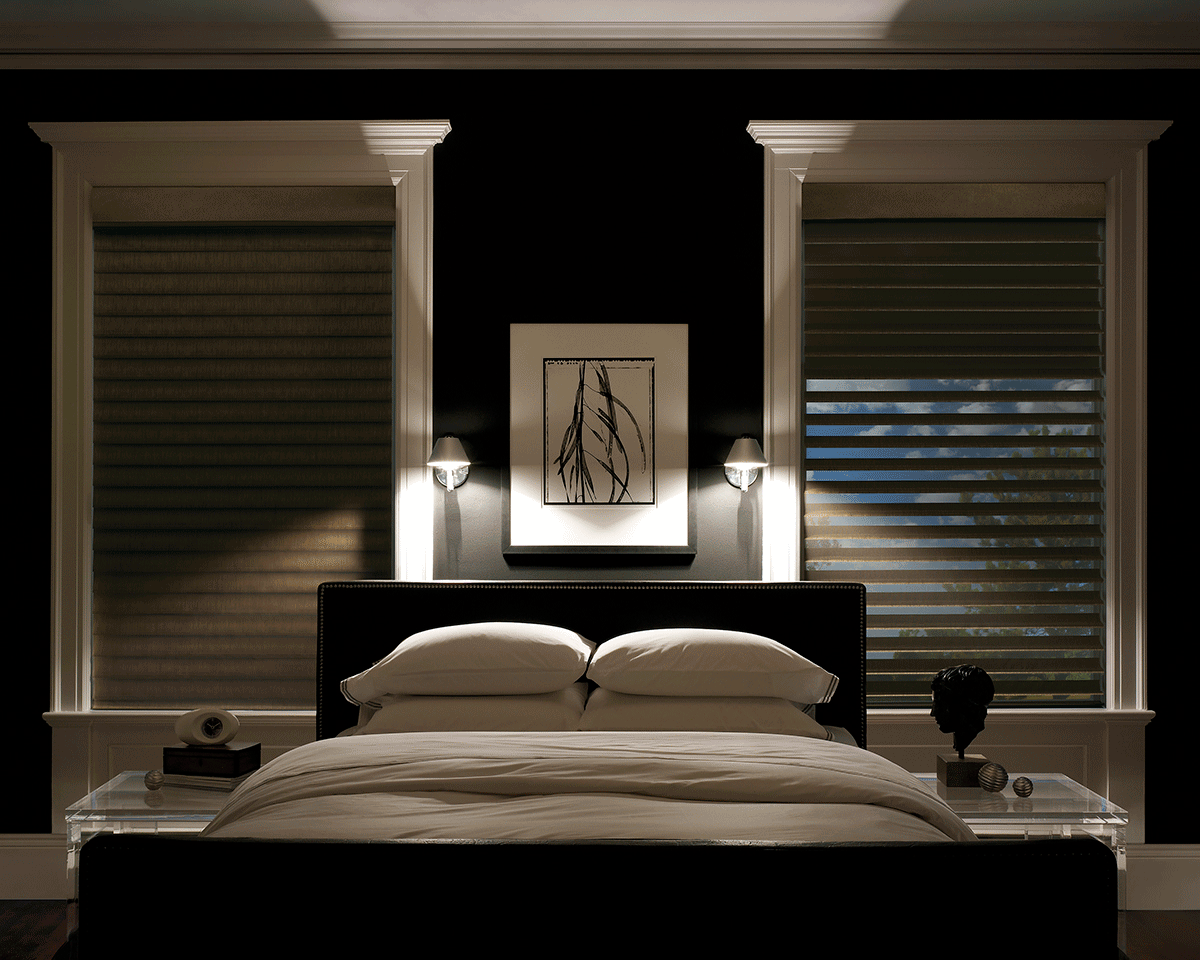The world we live in is well-lit. It’s hard to believe that just over a century ago, the vast majority of homes still relied on candles and gas lamps for illumination after dark. Now we take it for granted that a simple flick of a switch will offer instant lighting, day or night.
Of course, there are definitely going to be times when you want it dark, like when you’re trying to sleep, and blocking out the light will become your top priority. If your blinds, shades, shutters, or curtains aren’t up to the task, you could suffer from restless sleep that impacts your life, reducing your ability to concentrate throughout the day and causing you to become forgetful and irritable.
How can you reduce light leakage in your home and stop the streetlights and cars going by from keeping you up all night? With the right window treatments, designed with light-blocking properties.
Blackout Window Treatments
If you want to completely block out light, your standard drapes, blinds, shades, or shutters may not do the trick. While these window treatments will increase privacy and cut down on much of the light entering your home, they simply might not be designed with blackout properties in mind.
Luckily, there are plenty of window treatments specifically designed to block light with maximum opacity. Blackout drapes, for example, often come with stylish, designer textiles facing outward to complement your interior décor, while the backing facing the window consists of a totally opaque layer to completely block light.
There are also blackout shades that accomplish the same basic task, as well as cellular blinds that have layers designed to decrease light leakage. Most shutters are made from solid materials like wood or composite, which is naturally opaque. That said, you could still suffer some light leakage around seams with a single window treatment, which is why you might want to consider doubling up.
Combining Window Treatments
If you notice some leakage of light around the edges of window treatments or between slats, you can always increase blackout potential by adding a second window treatment. Pairing drapes with blinds, shades, or shutters can not only enhance the look of your interior décor and increase customization opportunities, but it can also boost your ability to control incoming light, and perhaps eliminate it completely.
Custom Tracks
If you’re still having trouble with tiny amounts of light leaking in and irritating you while you’re trying to sleep, you might want to upgrade to blinds or shades on custom tracks. Even with custom blackout products in place that are fitted to your windows, slight variations between the edge of the window frame and the window treatment could allow for minute slivers of light.
For this reason, you might want to look into custom tracks that are installed around the sides or the perimeter of window frames, with the shades or blinds fitted inside. You’ll still enjoy easy action when opening or closing blinds or shades, but the added tracks mask the edges to ensure zero light leakage.
If your current window treatments aren’t delivering the light control you crave, don’t hesitate to contact the experienced professionals at The Blinds Side now at 410-630-6940 or [email protected] to learn more and schedule a consultation.



